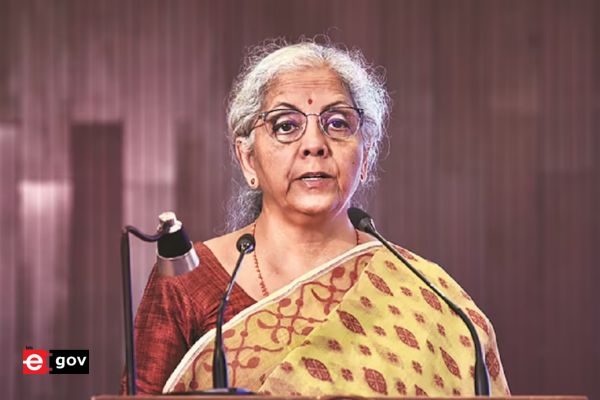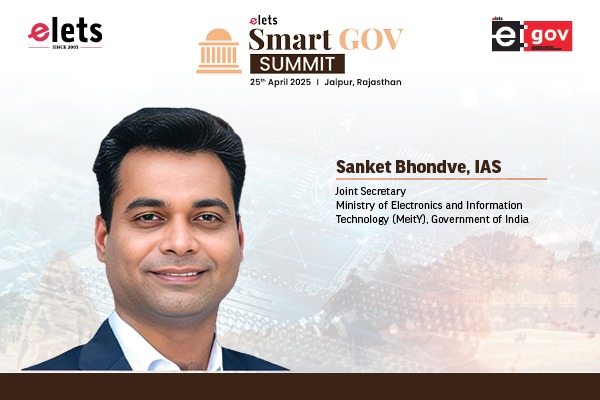
Union Finance Minister Nirmala Sitharaman will present the interim budget for the fiscal year 2024-25 on February 1. Following the 2024 general elections and the subsequent formation of a new government, the complete budget for the same fiscal year will be introduced. In her sixth Union Budget presentation on February 1, Sitharaman clarified that it would predominantly serve as a “vote on account” before the general elections, eliminating the possibility of any grandiose announcements. She emphasised that interim budgets typically lack spectacular announcements, urging the public to anticipate the comprehensive budget presentation by the new government in July 2024.
As anticipation builds, various sector and industry experts eagerly await the announcements, anticipating positive changes. Ranging from agriculture, infrastructure, and startup to education, energy, and industry, these experts share a common aspiration for a budget that fosters growth, encourages innovation, and enhances societal well-being.

Gree Energy

Tanya Singhal, Founder of Mynzo Carbon & SolarArise
The commercial and industrial sector eagerly awaits to procure gigawatts of renewable power. However, the stumbling blocks of cross-subsidy charges (CSS), high transmission & wheeling charges and a complex approval process is a major issue today. While the Ministry of Power (MOP) has curbed CSS charges escalation, immediate subsidies are required to tackle existing high charges. Simplifying intra-state open access through a streamlined approval process, ideally a single-window clearance, is crucial.

Recognizing the pivotal role of storage in enabling round-the-clock renewable power and bolstering electric vehicle adoption, India needs strategic investment in research and manufacturing of efficient storage technology. A substantial budget allocation is imperative to propel advancements in this critical domain.

While the 2023 budget earmarked 4000 MWh viability gap funding (VGF) for Battery Energy Storage Systems (BESS) at renewable power plants, it’s paramount to extend this support to the substation/grid level. Storage infrastructure at the grid (along with the plant end) is essential for grid stability, mitigating power surges during high sunshine/wind hours, and meeting excessive power demands during peak hours. Dedicated tenders backed by VGF support for grid-level storage are needed.
Despite the launch of LiFE (Lifestyle for the Environment) and the Green Credit Scheme, widespread adoption hasn’t happened. Urgent measures are needed to instil climate consciousness in the masses. Offering income tax benefits to individuals embracing sustainable lifestyles under these schemes can serve as a potent catalyst for widespread adoption.
Mr Vineet Mittal, Chairperson of Avaada Group
We expect that a quota should be mandated for the use of green hydrogen, ammonia and methanol in sectors like fertilisers, chemicals, steel, refineries, etc. Besides, the government should also consider implementing a nationwide policy mandating the use of Green M15 fuel i.e. mixing 15% green methanol with petrol, in transportation and other applicable sectors, supported by incentives for producers and consumers to adopt this fuel. It will help in demand creation and reduce production cost.
Besides, the government should also consider extending Section 115BAB of Income Tax up to 2030 for setting up of new manufacturing units for solar modules, electrolyzer and green hydrogen production.
To boost the sectors and achieve desired targets, GST should be kept nil, initially, on Green Hydrogen and its derivatives, whereas 5% GST should be reinstated on Solar Power Generating System and its related parts.
Like renewable energy generation projects, an equitable interest rate should be levied for solar module manufacturing projects as currently these projects bear an additional interest of 50 bps.
We also expect that green hydrogen, and its derivatives should be included in the harmonised list of infrastructure sub-sectors as these sectors have the capability to transform the country into a Net Energy Exporter. Also, a mechanism should be developed to facilitate low-cost financing and provide benefits like accelerated depreciation for green hydrogen infrastructure investments.
Customs duty should be exempted for importing green hydrogen technologies, equipment for production of renewable power (such as solar modules), manufacturing of green hydrogen (and its derivatives), such as electrolyzers, fuel cells, other imported components, etc., until adequate manufacturing capacity is established in the country.
Last but not the least, the government should consider implementing a policy where each district with over 100,000 residents establishes a 50 MW solar plant. It ensures localised energy generation, reducing transmission losses and boosting energy security.”.
Kunal Gala, Partner, Deal Value Creation, BDO India
The energy sector is eagerly anticipating the interim Union Budget, focusing on a cleaner and sustainable future. With hopes for a spotlight on green hydrogen and natural gas, the oil and gas industry seeks reforms to boost natural gas consumption and support the adoption of renewable energy. There’s a plea to bring petroleum products under GST, and the power sector emphasises the need for incentives in green hydrogen and energy storage solutions. Industry players are urging for lower interest rates to enhance competitiveness globally. While Finance Minister Nirmala Sitharaman’s budget may be a vote-on-account, the energy sector anticipates crucial allocations for the transition to cleaner fuels and sustainable practices.
The industry has been demanding for a long time to include alcoholic liquor for human consumption, under the GST purview. This would bring this industry at par with the other industries and also reduce the cost burden on account of non-availability of ITC on inward supplies.
Corporate tax
Kunal Gala, Partner, Deal Value Creation, BDO India:
In anticipation of India’s 2024 budget, expectations are high for impactful economic shifts. Key forecasts suggest a strategic cut in corporate tax rates, aiming to reduce the fiscal deficit to 5.2% of GDP in FY25. There is a strong focus on greener fuels aiming to revolutionise the energy sector. Additionally, targeted support for microfinance institutions is anticipated, enhancing their reach and stability. As elections approach, the budget is expected to include prudent populist measures, striking a balance between economic strategy and voter appeal.
Education
Sooraj Singh Gurjar Founder and Managing Director, Get Together Finance (GTF)
With elections coming up in less than 6 months, people are having high expectations for the budget 2024. Seeing the pace at which India is developing, the stock market enthusiasts are not far. In the past decade, the number of stock market participants has increased by nearly 100%. With the increased internet, the market is also seeing good growth. The coming decades will bring the best timeline for investing in the market.
This increased interest of people should be taken into account by the government of India and make favourable policies. Stock market education should be promoted. The financial literacy rate is not impressive in India currently. More initiatives should be taken by the government and a good fraction of the money should be assigned to teach students the importance of personal finance and budgeting at a tender age.
All the more, taxes on the capital gain of the stock market should be cut to create more involvement in the stock market. A reduction in capital gains tax might have a substantial impact on investment behaviour and encourage stock market participation. Lowering these taxes may encourage individuals to invest more actively, thus increasing market activity and liquidity. As a result, trading volumes may increase, encouraging economic growth and contributing to overall market expansion.
Real estate sector
Aman Gupta, Director of the RPS Group
Govt should take a close look at both supply sides and demand drivers to help the sector grow further and mitigate any potential risk. To boost demand, it should think about increasing the tax rebate on home loan interest, reducing the capital gain tax, and further lowering interest rates for the EWS segments. Similarly, to strengthen the demand side, it should create alternative funds, free land banks for new developments, rationalise the GST tax regime, etc. GOI should also promote green and sustainable real estate. Green realty can become mainstream only when there are concentrated efforts to support innovations and faster adoption of technologies.
Jetaish Gupta, Co-Founder and Director, Adore Group
This budget the govt. should take a closer look at the affordable housing segment. A sunrise segment of the realty market, the category suffered a decline in sales during the pandemic. Currently, it comprises just 20% of the total housing sales, a marked difference from pre-pandemic days, when it accounted for 40% of sales. Through carefully curated policy impetus, tax breaks, and fiscal support, governing agencies need to help the sector revive, as it will be instrumental in bridging the widening housing gap.
Gurmit Singh Arora, National President, Indian Plumbing Association
No doubt real estate is on a strong footing and the segment is poised to grow vigorously in 2024. However, regulatory bodies and governments also need to play a pivotal role by integrating affordability and long-term sustainability. Indian urban centres still suffer from acute housing shortage and reports have suggested that by 2030, India needs an additional 25 million homes to bridge the gap. However, the government needs to take proactive steps in this regard. Besides lowering the lending rates in the affordable segment, the definition of affordability should be tweaked so that a greater number of households can come under its ambit. Developers should also be incentivized via better funding options, tax discounts, and R&D support. This will make the category sustainable in the long run. In tandem with affordable housing, GOI should also think about reducing repo rates and investing in long term public infrastructure. Moreover Buildings account for about 40% of the carbon emissions worldwide. 11 % comes from materials used and 28% comes from Operational Carbon . Buildings unlike vehicles are also an asset class built for 50 to 70 years. Hence if we want to Decarbonize India and achieve Carbon Neutrality then we need to build buildings which are mandatory certified Green
Startup
Hariom Seth, Founder, Tagglabs
AI startups face challenges with computer access. The budget could establish affordable public cloud HPC infrastructures. AI requires ample data, and the budget could support building relevant datasets for India. Global data may not grasp our issues or adhere to our rules. Ensure strict rules for data handling. Local data enhances AI tailored for India and ensures ethical usage.
India lacks AI knowledge. The budget could allocate funds for training, scholarships, and partnerships, even in remote areas. Allocate funds for AI research in vital sectors like farming, banking, and healthcare. Provide incentives like tax breaks and public-private partnerships to encourage AI use across sectors. Support ethical AI development through training and awareness campaigns.
Mr. Anand Sri Ganesh, CEO of NSRCEL IIMB
The incubation ecosystem in India is at a curious cusp. There are over 1000 incubators in India today. However, very few are truly able to work with ventures to unlock innovation and create sustainable, scalable businesses. Of the over 100,000 startups incorporated in the country since 2016, less than 5% work with incubators to gain entrepreneurial expertise. Despite this, startups are estimated to contribute to 5-6% of our GDP growth. This implies we have a huge upside opportunity by upgrading Incubation capability to enable startups to truly innovate and scale. On the other hand, the incubation ecosystem runs the risk of becoming irrelevant to the startup ecosystem beyond being incidental contributors. Both scenarios have played out in other entrepreneurship ecosystems across the world.
This is a market failure that requires concerted policy intervention that puts the incubator at the centre and enables world-class incubation capability at the national scale.
It will require a combination of capability building, incentive mechanisms for corporates and science & technology institutes to work with incubators systemically, and fiscal and monetary support to enable incubators themselves to sustain and continuously innovate.
Retail and E-commerce
Raghunandan Saraf, CEO and Founder, Saraf Furniture
As we approach the 2024 budget, to make business and new ideas better, policymakers should implement the budget carefully. Using technology is also a key for the future success of the retail industry. A budget that sets aside money for research and development, as well as using new technologies like artificial intelligence and data analysis, will let businesses keep up with what consumers want. Furthermore, teaming up between government groups, business leaders and schools can make a shared work network that helps new businesses start. Making special start-up help centres for retail businesses will give important guidance, money, and things. For retail, trust from customers is very important. People who make rules should focus on plans that help protect consumers and keep their information private. This will create a safe place where customers feel good when they buy things.
Tejpal Singh Shekhawat, Founder and CEO of Kalyanam Furniture
As we get ready to make a budget for 2024, it’s really important that policymakers should pay lots of attention to small retailers in tier2 and tier 3 cities. This is because these cities contain stores that can grow big and compete with more established businesses. It should include spending money on improving skills, fixing things and using tech in city stores that are not the main ones. The government can make local business better by spending their education and skills. This helps them not only survive, but also do well in a tough retail market.
The budget should include ways to encourage teamwork between second-tier city stores and bigger ones. This is important for growth. Setting up helpful connections between small and big stores can help make a retail world that works together better. This teamwork could lead to a great situation, where smaller stores can get resources and smarts about what sells from big shops, while large ones get more fast action and know-how of their local area stuff.
Export
Rahul Ahluwalia, Co-founder, Foundation for Economic Development
India’s path to growth lies in prioritising exports to global markets, which are vast compared to the domestic Indian market. The government’s ambitious target of exporting goods and services worth $2 trillion by 2030, and the spectacular growth of electronics exports last year, inspire confidence that policy-wise, we have the right targets in mind. However, till October ’23, India’s overall merchandise exports had declined by 5.5% year-on-year. This has happened, in part, because with an average MFN (most-favoured nation) tariff of 9.7% and a relative absence of FTAs compared to countries like Vietnam, India imposes the highest tariffs among prominent developing economies. High tariffs on imports result in costlier inputs and reduce the competitiveness of downstream Indian exports in international markets.
Since this will be a vote on account or an interim budget before the general elections, it is unlikely to have any big announcements. Still, reductions of import duties are well within its ambit. Given the government’s focus on exports, we think that the budget will reduce tariffs to foster competitiveness and enable the Indian industry to thrive globally.
Srivatsan Sridhar, Founder and CEO, Skydo, a cross border payments platform
An increase in the minimum revenue threshold for mandatory GST registration from INR 20 lakhs to INR 50 lakhs will help small scale suppliers minimise their compliance costs. Additionally, there is a need for clear guidance on the necessity of GST registration for businesses that are entirely focused on exports, considering their supplies are zero-rated.
Another key expectation is the simplification of the Input Tax Credit (ITC) refund process for exporters. The current disparity between the documentation requirements of the Foreign Exchange Management Act (FEMA) and GST is a significant hurdle. While FEMA and the Reserve Bank of India have eliminated the need for the Foreign Inward Remittance Certificate (FIRC), the GST department still demands it to confirm the receipt of export remittances in foreign currency. Aligning FEMA and GST documentation requirements will facilitate smoother operations for exporters, reducing bureaucratic hurdles and expediting the refund process.
Travel & Tourism
Madhavan Menon, Executive Chairman, Thomas Cook India Ltd.
The Travel & Tourism sector represents a vital economic driver: With a 5.8% contribution to India’s GDP (2022) and the government’s target of achieving $1 trillion by 2047, the sector forms a strong force multiplier – across allied sectors, employment generation and foreign exchange receipts. Our expectations from the Union Budget include key pivots to transform India into a destination of choice:
Infrastructural Focus: As a key fundamental for the sector, setting up of new airports via private participation must become a priority – thus creating a viable hub & spoke model; also rapid expansion in rail, road and waterways (sea and river cruises). Additionally, infrastructure development for high growth areas like religious circuits and underleveraged hidden gems (Lakshadweep).
Inbound Tourism: revival of the Inbound incentive scheme – but for select destinations.
1. Tax: – Reduced Income tax levels to provide increased disposable income in the hands of the people – a boost for travel & tourism spends
– LTA exemption annually, against twice in 4 years to catalyse domestic tourism
– Standardisation of TCS at 5% on foreign travel packages (against the current 5% and 20% slabs).
– Clarity wrt TCS on Forex card payments
2. GST is a key area and our wish list for Budget 2024-25 includes:
– Allow GST input credit facility for inbound and domestic tourism
– Centralise similar issues faced by a single assessee in multiple states – reducing unwarranted time, efforts and litigations in multiple jurisdictions
– Simplify the compliance mechanism in filing reports, reconciliations, audits”.
Vishal Suri, Managing Director, SOTC Travel
“SOTC Travel advocates for a multi-pronged approach. Albeit interim, the Union Budget offers significant opportunity as a growth accelerator for the travel & tourism sector – a valuable contributor to the country’s GDP and a powerful employment engine. Our ask is a multi-pronged approach:
Coalesce the TCS rate on outbound tours into a single 5% slab to reduce the significant advantage enjoyed by international competitors (exempt from this levy).
Remove the deterrent to technology – in the form of the current TDS that is levied on automated bookings (self-booking tools) for internal/closed user groups such as our Business Travel platforms. This would align with the government’s commitment to ease of doing business and digital adoption, and the larger objective of building a Digital India.We are confident of the government’s continued focus on expediting infra development, especially extension of its Udan Yojana and Vande Bharat routes that ensures regional access and affordability. Connectivity to remote but viable tourism areas creates vibrant new circuits plus meaningful employment that uplifts the entire ecosystem. Incentives that promote sustainable travel and tourism are now a critical task as we endeavour to preserve our planet for future generations.
Agriculture
Ashvin Patil, Founder and Director of Biofuels Junction
The inclusion and recognition of those working with agri-residues as feedstock for biofuels in the priority sector lending mandate in the budget can help open up significant financing opportunities for smaller players in the industry and rural entrepreneurs. Currently, aspects like tractor financing are part of priority sector lending, which benefits from lower interest rates. It would not only provide financial impetus to emerging sectors within agriculture but also align with broader goals of sustainability and innovation in agricultural practices. It will also encourage farmers to refrain from stubble burning and contribute to the growing biofuel industry, creating a sustainable cycle of waste-to-wealth.
Advertising and Marketing Sector
Delphin Varghese, Co-founder & Chief Business Officer, AdCounty Media
The Vote on Account interim budget will be presented on February 1, 2024. The full Union Budget for 2024-25 will likely be presented sometime in July 2024, after the new government is formed. The thriving startup culture is expected to lead to investment in the advertising and marketing sector. As witnessed earlier, the union budget aligns with the government’s goal of reaching the GDP threshold of $5 trillion by 2025–2026.
With the correct policy framework, startup culture will continue to thrive. These policies and investments will contribute significantly to inclusive and sustainable growth in Bharat and create jobs. India’s economy is expected to increase by 9.2% in the next fiscal year, which is good news for the whole sector. We also anticipate that media and advertising will grow significantly due to the overall expansion, which was hindered by the pandemic in the previous two years.
Highway advertising is growing as a very strong option for brand marketing across several sectors, providing a new dimension to expanding the out-of-home industry. SMEs and startups are a major source of revenue for the advertising industry. This market could profit from tax advantages, subsidies, or easily accessible credit for digital marketing and e-commerce training. Campaigns displaying Indian products and services in foreign markets should be backed to encourage economic diversification and increase exports.
Be a part of Elets Collaborative Initiatives. Join Us for Upcoming Events and explore business opportunities. Like us on Facebook , connect with us on LinkedIn and follow us on Twitter, Instagram.
"Exciting news! Elets technomedia is now on WhatsApp Channels Subscribe today by clicking the link and stay updated with the latest insights!" Click here!













